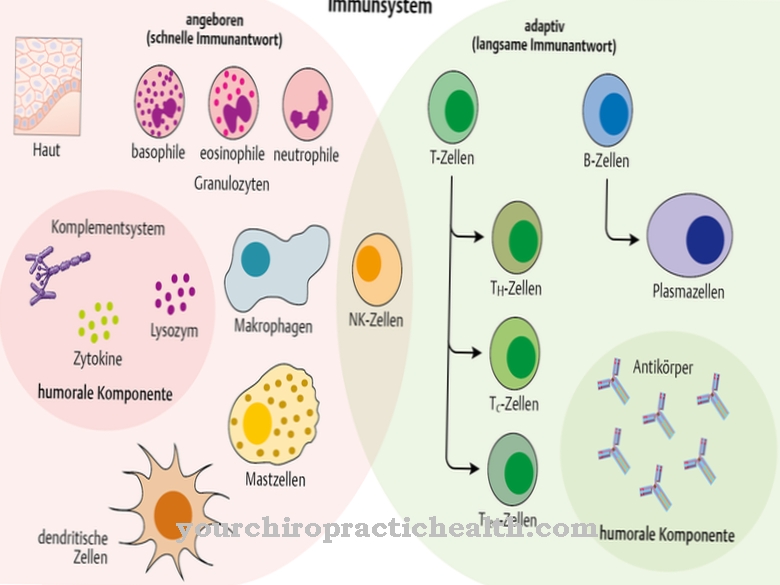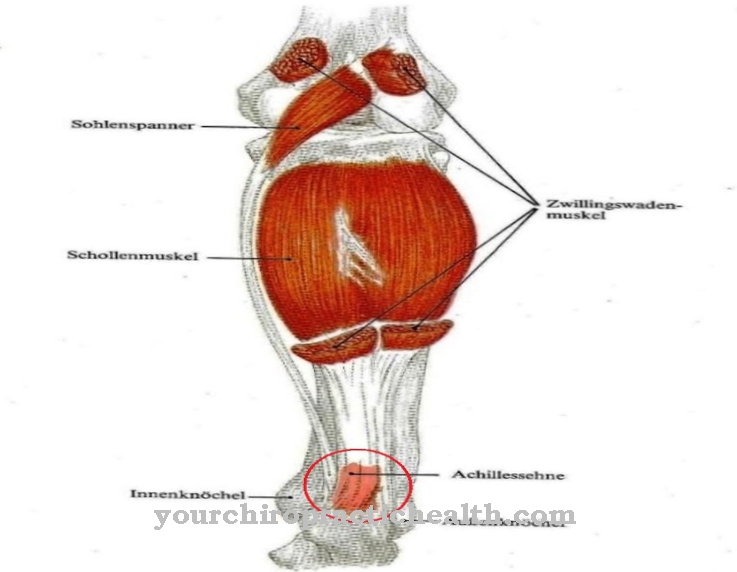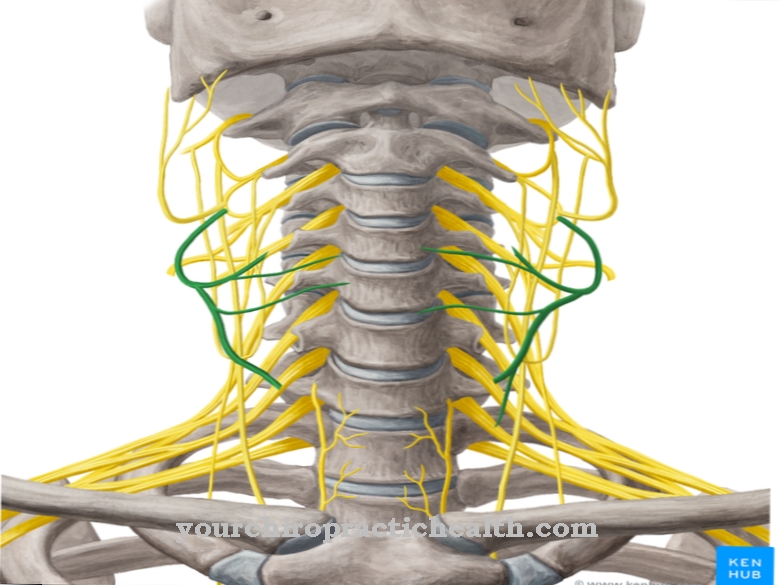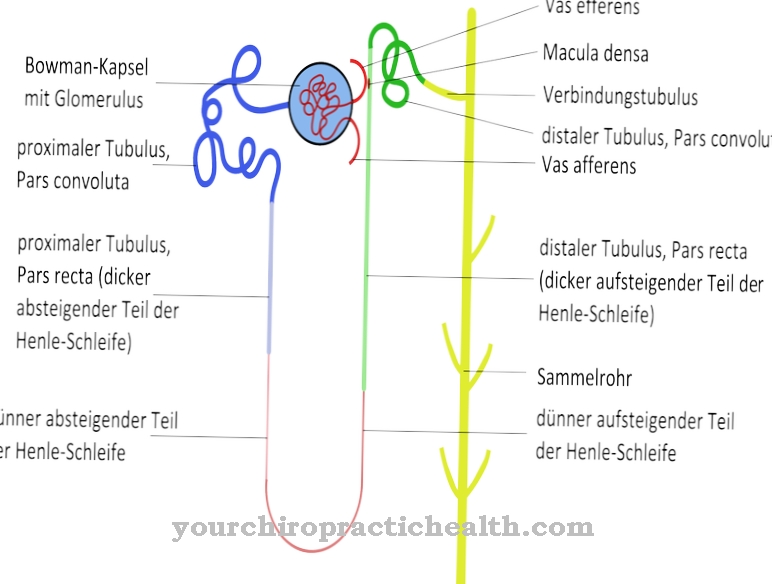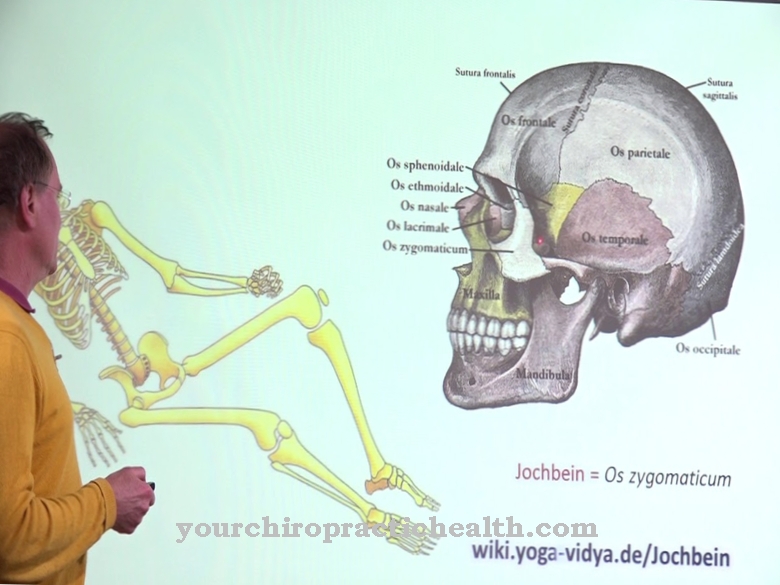In his life, a person's muscle mass increases 30 times. This is proof of how important this organ system is to the human body. What is the Musculature? How is it structured and what function does it fulfill? What diseases and ailments do you have to expect with regard to the muscles?
What are the muscles?
Muscles are organs that move the - in this case human - organism with the help of tension and relaxation. These are movements that affect active locomotion on the one hand and systems of internal body functions on the other.
For example, we use muscle strength to move our legs while running and the heart also pumps blood through the entire organism thanks to muscle strength.
The name Musculature Incidentally, it comes from the Latin word "musculus", which means "little mouse" and comes from the fact that a tense muscle under the skin is reminiscent of a mouse.
Anatomy & structure
The Musculature consists of muscle tissue, which in turn is composed of muscle cells or muscle fibers. The muscle is surrounded by the fascia. It is an elastic cover made of connective tissue and wraps around several meat fibers.
These, too, are each held together by connective tissue, which is permeated with nerves and blood vessels. A meat fiber in turn divides into fiber bundles. These bundles are stored in such a way that they can be shifted to make the muscle flexible. The fiber bundles do not yet form the smallest unit either, because they consist of individual muscle fibers.
Muscle fibers are unable to divide. This means that if there is a loss, they cannot grow back. The number of muscle fibers is therefore fixed from birth; when muscle is built up, the individual fibers only become thicker.
Functions & tasks
A person has 656 muscles. The extent to which they affect body mass depends on the lifestyle of the individual. In men, the muscle percentage is 37% to 57%, in women around 27% to 43%. When the muscle becomes active, it first contracts and then relaxes again.
In this way he exerts a movement or releases a force. This contraction is triggered by electrical impulses that the brain or spinal cord transmits to the nerves. Some muscles are called agonists and antagonists, i.e. players and opponents who work in opposite directions. An example of this would be the biceps and the triceps.
Synergists, on the other hand, are muscles that work with each other during certain movement sequences. Furthermore, the muscle function knows adductors, these are muscles that you need to pull something to the body. We need abductors, on the other hand, when we make splaying movements, for example.
Diseases
There are numerous problems and diseases that are related to the Musculature may occur. Everyone knows the sore muscles after high stress on certain muscle parts, and muscle cramps, caused by a magnesium deficiency, are a phenomenon that athletes in particular often have to "struggle" with.
In addition to these rather harmless phenomena, injuries such as pulled muscles or torn muscle fibers also occur. In contrast to a fiber tear, there is no tissue damage in the case of a strain. It is often sufficient to protect the affected area and to cool it. If the complaints are ignored, however, the muscle fiber may also tear. In this case, especially for athletes, surgical intervention is often necessary.
Tense muscles and bruises are typical injuries that are caused by improper or overuse or falling. In addition to muscle diseases that can be traced back to external influences, there are also those that have genetic or neurological causes. Progressive muscle wasting, for example, is in many cases caused by a genetic defect.
Muscle weakness, in turn, is a neurological disease in which the transmission of signals between nerves and muscles is impaired. If you suffer from muscle problems that are not due to harmless symptoms such as sore muscles or a slight bruise, you should definitely seek the advice of a doctor.
You can find your medication here
➔ Medicines for muscle weaknessTypical & common diseases
- Torn hamstring
- Muscle weakness
- Compartment syndrome
- Inflammation of the muscles (myositis)
- Muscle wasting (muscular dystrophy)

